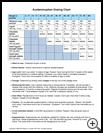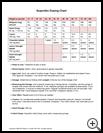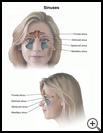
Sinus Infection
What is a sinus infection?
A sinus infection is a bacterial infection of one of the sinuses that normally drain into the nose. Congestion in a sinus commonly occurs when one of the sinus openings becomes blocked from a cold or hay fever. Sinus congestion usually goes away on its own without becoming an infection. If bacteria multiply within the sinus, a sinus infection can occur. The main symptom is facial pain (sinus pain). Other symptoms of a sinus infection are:
- Swelling of the skin over the sinus (for example, puffy eyelids on one side)
- Fever that lasts more than 3 days or begins several days after your child gets a cold
- Yellow/green nasal discharge lasting more than 14 days
Swallowing sinus secretions is normal and harmless but may lead to some nausea. Sinus infections can be diagnosed without doing sinus X-rays or a CT scan.
How can I take care of my child?
The following treatment should reduce pain and fever within 48 hours or less.
- Antibiotics
Your child needs the antibiotic prescribed by your healthcare provider. This medicine will kill bacteria that are causing the sinus infection.
Try not to forget any of the doses. If your child goes to school or to a baby sitter, arrange for someone to give the afternoon dose. If the medicine is a liquid, use a measuring spoon to make sure that you give the right amount. Even though your child will feel better in a few days, give the antibiotic until the bottle is empty to prevent the infection from flaring up again. Do not save the antibiotic for the next illness because it loses its strength.
- Nasal saline
Use saline (salt water) nose drops or spray followed by suction or nose blowing to wash dried mucus or pus out of the nose. These products are available in drug stores without a prescription. If you don't have saline, teens can use a few drops of clean tap water.
Use nasal saline rinses at least 4 times a day or whenever your child can't breathe through the nose. If the air in your home is dry, run a humidifier.
- Decongestant nose drops or spray for teens
If the sinus still seems blocked after the nasal washes, you can use long-acting decongestant nose drops or sprays if your child is over age 12 years. These are nonprescription items. Ask your pharmacist to recommend a brand.
Before you use nose drops or a spray, your child should clear his nose by sniffing or blowing it. The openings to the sinuses are on the outer side of the nasal passages. Point the nasal spray in this direction. To deliver nose drops to the sinuses, put them in while your child is lying on a bed with his head tipped back and turned to one side.
Caution: Use nose drops or a spray only for the first 2 days of treatment. Then don't use them again unless the sinus congestion or pain recurs. The drops or spray must be stopped after 5 days to prevent rebound swelling.
- Pain-relief medicines
Your child can take acetaminophen (Tylenol) or ibuprofen (Advil) for a few days for sinus pain or any fever over 102°F (39°C).
- Oral antihistamines
If your child also has hay fever, he or she should take allergy medicine (antihistamine). Otherwise avoid using antihistamines because they can slow down the movement of secretions out of the sinuses.
- Fluids
Encourage your child to drink adequate fluids to prevent dehydration. This will also thin out the nasal secretions.
- Contagiousness
Sinus infections are not contagious. Your child can return to school or day care when he or she is feeling better and the fever is gone.
When should I call my child's healthcare provider?
Call IMMEDIATELY if:
- Redness or swelling occurs on the cheek, eyelid, or forehead.
- Your child starts acting very sick.
Call during office hours if:
- The fever or pain is not gone 48 hours after your child starts taking the antibiotic.
- You have other questions or concerns.
Last modified: 2016-06-01
Last reviewed: 2017-06-05



